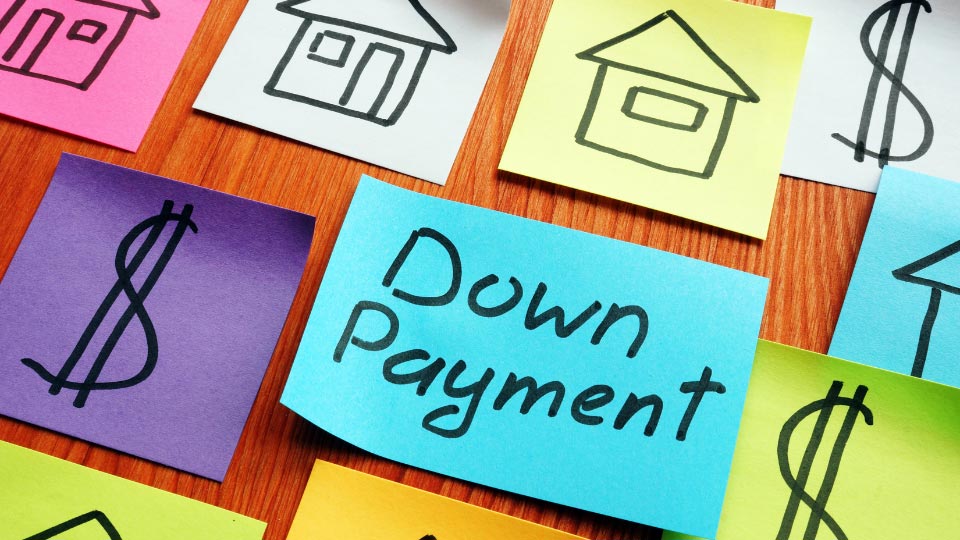In the quest for homeownership, one question frequently arises: how much do I need to save for a down payment? As with many financial matters, the answer is not set in stone but depends on various factors. In this blog post, we will delve into the intricacies of down payments, provide insights into the average percentages for first-time home buyers, and explore the significance of understanding your comfortable monthly payment and how to find a mortgage lender.
Down Payment Insights:
So how much should you put down? Well, it varies. Down payments commonly range from 3% to 20% of the purchase price. For instance, a 10% down payment on a $350,000 home would be $35,000. Traditionally, a mortgage down payment is at least 5% of a home’s sale price.
However, you might have heard you must put down 20% when buying a house. While this has long been the benchmark, it’s not set in stone. In fact, the median down payment for first-time home buyers is 7%, according to the National Association of Realtors. A Federal Housing Administration (FHA) Mortgage even has a minimum down payment of only 3.5%.
For example, if you’re buying a $300K house with a conventional loan, you’ll need a down payment of $9,000, or 3 percent. If you’re using an FHA loan, you’ll need a downpayment of $10,500, which is 3.5 percent of the purchase price.
So why do some people aim for a 20% down payment? One of the benefits is that it eliminates private mortgage insurance (PMI) on a conventional loan. PMI can cost between 0.2% and 2% of your yearly loan, so a sizeable down payment could mean savings. However, it’s important to note that your PMI fees will be waived once you’ve reached the 20% threshold in your home equity.
Guidance for Homebuyers:
To assist prospective homeowners in determining their down payment goals, we advise initiating a casual conversation with a trusted lender. These professionals possess the expertise to assess your financial situation and guide you on the right track. As a general rule of thumb, targeting a 10% down payment is a prudent approach.
One aspect that can catch many prospective buyers off guard is the concept of closing costs. While down payments are often at the forefront of our minds, understanding closing costs is equally crucial when it comes to budgeting for your dream home. Closing costs are additional expenses incurred during the real estate transaction, and they encompass a variety of fees, including lender charges, title and escrow fees, appraisal costs, and insurance premiums. These costs can significantly impact your budget, so being prepared and informed about what to expect is essential. Closing costs can vary but are usually around 2% of the purchase price, so include this in your savings calculation.
Another reason it might be wiser to put down a lower amount (like 10%), even if you have the funds for a bigger downpayment, is to prepare for the unforeseen costs of home ownership. When taking the monumental step of purchasing a home, having an emergency fund becomes more critical than ever. An emergency fund serves as a safety net during times of unexpected financial challenges, and homeownership can come with its fair share of surprises. From unforeseen home repairs and maintenance costs to sudden changes in employment or personal circumstances, having a well-funded emergency reserve can provide a sense of security and stability in the face of uncertainty. Without an emergency fund, unexpected expenses could strain your finances, potentially leading to missed mortgage payments or even jeopardizing your homeownership altogether. By setting aside a dedicated fund for emergencies, you can confidently navigate the ups and downs of homeownership without compromising your long-term financial goals.
Beyond Down Payments – Monthly Payments Matter Too:
While the down payment is a crucial aspect of homeownership, it is equally important to understand the implications of your monthly payment. Striking a balance between your financial capabilities and your desired lifestyle is essential. As you embark on your homeownership journey, take the time to assess your budget and evaluate what monthly payment you are comfortable with.
Navigating the complexities of down and monthly payments is integral to the home buying process. Understanding the average down payment percentages for first-time home buyers, seeking guidance from lenders, and assessing your comfortable monthly payment will empower you on your path to homeownership. Remember, knowledge and informed decision-making are key. Good luck on this exciting endeavor!


